Oh! The Horror… | of ‘Split’ & Misrepresentation
One massive spoiler ahead. If you haven’t seen the movie (and are interested in seeing it), hold off on reading this until you do.
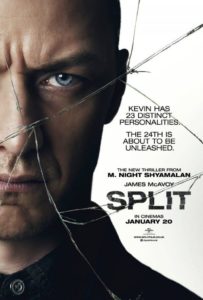 2015’s The Visit was M. Night Shyamalan’s first bid for a return to form for a director who graced our movie screens with classics such as The Sixth Sense and Unbreakable and disappointed many with The Lady in the Water and The Happening. The Visit was a resonant mess and suffered much from its inability to find a cohesive tone, but it stuck with me throughout that year so much so that it landed on my list of top 2015 horror. There was enough going on with The Visit to start keeping an eye out for what Shyamalan would do next. Enter Split: a film about a man, Kevin, that suffers from Dissociative Identity Disorder (DID)—played by James McAvoy who seemed to be having too much fun with the role—who kidnaps three teenage girls (including our protagonist, Casey, played by the supremely haunting Anya Taylor-Joy) and keeps them in an underground location where they seek to escape his grasp throughout the running time of the film.
2015’s The Visit was M. Night Shyamalan’s first bid for a return to form for a director who graced our movie screens with classics such as The Sixth Sense and Unbreakable and disappointed many with The Lady in the Water and The Happening. The Visit was a resonant mess and suffered much from its inability to find a cohesive tone, but it stuck with me throughout that year so much so that it landed on my list of top 2015 horror. There was enough going on with The Visit to start keeping an eye out for what Shyamalan would do next. Enter Split: a film about a man, Kevin, that suffers from Dissociative Identity Disorder (DID)—played by James McAvoy who seemed to be having too much fun with the role—who kidnaps three teenage girls (including our protagonist, Casey, played by the supremely haunting Anya Taylor-Joy) and keeps them in an underground location where they seek to escape his grasp throughout the running time of the film.
Simple enough? Very much so. Matter of fact, this is the type of story idea with which Shyamalan excels. It is a compelling blurb to be sure and most of the film rides out that conceit in a rather straightforward fashion. However what catapults Split in its final minutes is not the immediate narrative’s twist ending—because within the scope of Kevin and Casey’s interaction there is no real satisfactory narrative resolution—but in what existing universe Shyamalan places “The Beast.” The Beast appears to be the upcoming foe for Unbreakable’s David Dunn. When the media is reporting on the happenings of the film and the people in a diner watch and listen, the camera travels down the countertop to reveal Bruce Willis reprising his role. Anyone who loves Unbreakable as much as I do probably had an unabashedly huge smile on their face in that moment. This means that we will probably be getting another film in the Unbreakable universe and perhaps a reunion of Willis and Jackson joined by McAvoy and Taylor-Joy in one way or another.
As joyful as that ending made me, however, with more reflection, I started to wonder about the nature of an ending that so quickly shifted my view of a film. Just how much am I retrofitting my feelings about the other hour and forty-five minutes based solely on those final moments? That is the problem I find myself in. Is that form of “twist” clever or a cheap façade for a film that didn’t quite know how to end its immediate plot? We still don’t have a satisfying resolution as to the connection between The Beast and Casey outside of their shared abusive pasts and Casey’s story is left in a rather abrupt and disconcerting place of surviving the film’s ordeal and being forced to go back home to the uncle that molests her. If there was a sense from the film that she had a new resolve or anger or, even, plan for vengeance against her abuser when going back home then the immediate story’s ending would have worked better. However, Shyamalan’s restraint at the end—in order to really accentuate the final reveal actually did more harm to the characters of the film than they deserved and that is a problem.
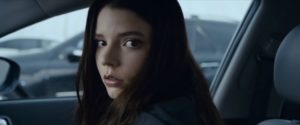 On top of that, there had been backlash towards the film even before its release in how it appears to vilify mental illness. 20,000 people have boycotted the film for its portrayal of mental illness and various people have dissected the problems with Shyamalan’s newest film. Matthew Rosza, in his review for Salon, states that Shyamalan “stumbles [in] the ham-handed use of mental abnormality as a stand-in for the superpowers of heroes and villains. Juxtaposing real hardships with fictional tropes lends itself to gross oversimplifications.” The Guardian’s Steve Rose places the problematic use of DID, specifically, within the history of cinema since its birth which ultimately shows that DID—while only accounting for 2% of cases that fully fit every qualification for diagnosis—is “the foundation for the whole vast entertainment industry that so often misrepresents it.” Rose sums of this misrepresentation by saying, “Just as autism in the movies makes you a maths genius, so DID makes you a ‘psycho’.”
On top of that, there had been backlash towards the film even before its release in how it appears to vilify mental illness. 20,000 people have boycotted the film for its portrayal of mental illness and various people have dissected the problems with Shyamalan’s newest film. Matthew Rosza, in his review for Salon, states that Shyamalan “stumbles [in] the ham-handed use of mental abnormality as a stand-in for the superpowers of heroes and villains. Juxtaposing real hardships with fictional tropes lends itself to gross oversimplifications.” The Guardian’s Steve Rose places the problematic use of DID, specifically, within the history of cinema since its birth which ultimately shows that DID—while only accounting for 2% of cases that fully fit every qualification for diagnosis—is “the foundation for the whole vast entertainment industry that so often misrepresents it.” Rose sums of this misrepresentation by saying, “Just as autism in the movies makes you a maths genius, so DID makes you a ‘psycho’.”
While I am hesitant to make a strong case for Split’s exploitation of mental illness, there are questions that should be asked of films like this. Because the ending places Kevin’s eventual embrace of The Beast’s personality within the mythology of a comic book universe and demonizes a character that was seemingly reality-based, it is not hard to see where the critics of the film may have a point about DID’s portrayal. However, with a couple of exceptions, many of the critics end up making a similar error by lumping DID in with mental illness writ large; flattening its rarity and unique challenges in the name of public advocacy. They also don’t give the film credit where credit is due. There are elements of the film that strike a rather progressive tone to viewing mental illness and disability.
Kevin’s psychiatrist, Dr. Karen Fletcher, is working from a premise that mental illness or disability isn’t something to be viewed as a negative attribute, but as an attribute that gives those people a greater sense of humanity or, as she puts it, a place further along on the evolutionary spectrum. For a good portion of the film, Kevin’s attributes find a reasonable if more dramatic correlation with the descriptions provided by the National Alliance on Mental Illness. Even the shifting biological chemistry that is witnessed between Kevin’s personalities is not a far stretch from the findings of Dr. Simone Reinders from The Guardian article above.
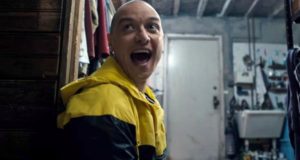 All of this to say that Split is a film that will probably remain divisive among viewers depending on the individual readings of the narrative, sensitivity to the misrepresentation of DID and how the ending hits the viewer—based on their past relationship to Unbreakable. For me, the film remains a striking conundrum: do I allow the ending’s propulsion of the story into a mythological world carry me away even when it makes the previous majority of the film problematic in its vilifying of DID or do I recognize the ending as a blindsiding fix for a lack of actual narrative resolve and judge the remainder of the film on its own faulty merits while finding its portrayal of DID to be less problematic within the scope of the rest of the film. To be honest, I’m on the fence. I am excited about the prospect of a second Unbreakable, however I think the film ushering in that news could have been stronger overall, resolved its immediate narrative apart from the final minutes and could have created a character for David Dunn to battle that didn’t vilify an actual illness from which real people suffer in the world. Monsters should promote compassion when they are dissected, they shouldn’t be turned into an “other” that feeds bigotries and misinformation.
All of this to say that Split is a film that will probably remain divisive among viewers depending on the individual readings of the narrative, sensitivity to the misrepresentation of DID and how the ending hits the viewer—based on their past relationship to Unbreakable. For me, the film remains a striking conundrum: do I allow the ending’s propulsion of the story into a mythological world carry me away even when it makes the previous majority of the film problematic in its vilifying of DID or do I recognize the ending as a blindsiding fix for a lack of actual narrative resolve and judge the remainder of the film on its own faulty merits while finding its portrayal of DID to be less problematic within the scope of the rest of the film. To be honest, I’m on the fence. I am excited about the prospect of a second Unbreakable, however I think the film ushering in that news could have been stronger overall, resolved its immediate narrative apart from the final minutes and could have created a character for David Dunn to battle that didn’t vilify an actual illness from which real people suffer in the world. Monsters should promote compassion when they are dissected, they shouldn’t be turned into an “other” that feeds bigotries and misinformation.


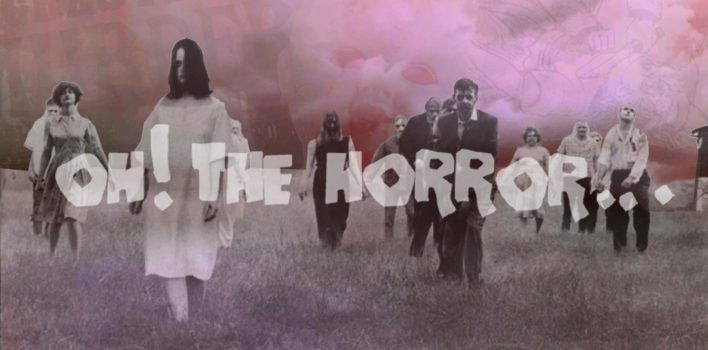

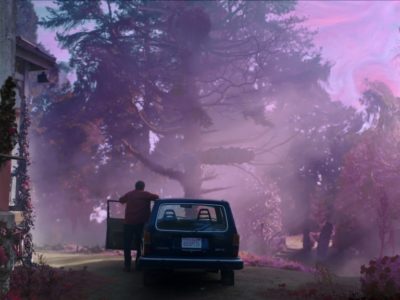
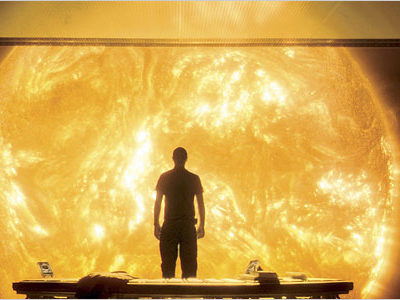


I completely get what you are saying in this review. The film definitely leaves you with some tension on a few different levels. But I loved the symbolism of the ending. It left me in tears actually. I interpreted the beast to struggle of mental illness, and the girl’s journey with confronting her past to reflect the hopeful possibility of overcoming. I didn’t feel it was left untended or unresolved, just artfully represented. In-fact, I think if the film had gone for a more cut and dry ending it would have taken away from the symbolism of the two characters.
Loved the film!
glad you found the film to be more moving than I did. I didn’t want a more cut and dry ending, I just felt like the ending did not successfully follow through in an honest way on the emotional and narrative drive of the film. I, too, loved the ending, but right before the ending, I honestly didn’t care for the movie. However, the ending gave it a couple of extra points in my book even though I think it created problems with portrayal.
Thanks for the comment!